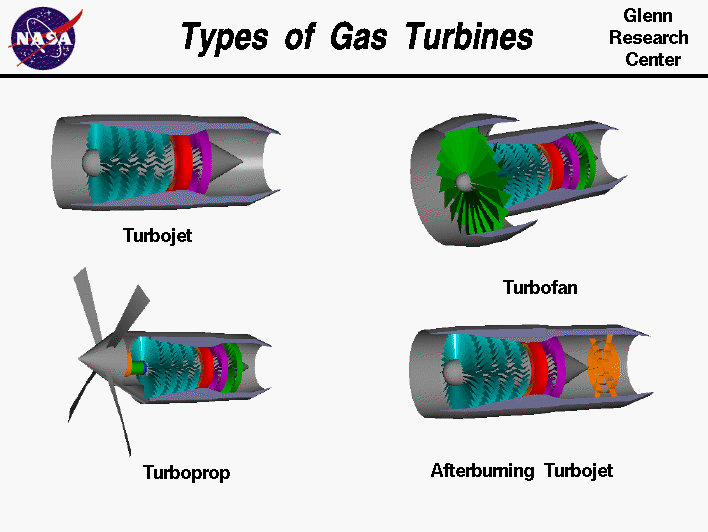You are not logged in.
- Topics: Active | Unanswered
Announcement
#1 2016-05-06 16:09:11
- lonewolf-mcquade
- Player


- Reputation: +54
- Location: A secure undisclosed location
- Registered: 2015-08-23
- Posts: 195
- Website


The Spitfires that nearly broke the sound barrier (BBC)
This piece on the role of WWII fighter planes and amazing pilots in development of supersonic flight is great!
http://www.bbc.com/future/story/2016050 … nd-barrier




Last edited by lonewolf-mcquade (2016-05-06 16:10:03)
#2 2016-05-06 18:54:53
- nämeless
- Semi-corrupt admin


- Reputation: +2600
- Location: Nizhny Novgorod, Russia
- Registered: 2012-09-30
- Posts: 9,767


Re: The Spitfires that nearly broke the sound barrier (BBC)
It's pretty interesting article but, judging by Wikipedia, the fastest propeller aircraft is Tu-95 and it's not even a fighter. Propeller potential is weak these days and it's appropriate only for sport aircraft. It was the reason, for example, why the Americans were forced to discard Corsairs in Korea, the planes that were superior just 5 years earlier.
#3 2016-05-06 20:07:32
- Russ
- Jack-of-all-trades


- Reputation: +136
- Registered: 2015-06-26
- Posts: 390


Re: The Spitfires that nearly broke the sound barrier (BBC)
There are quite a few excellent tactical prop aircraft, the Super Tucano being an excellent example.
#5 2016-05-06 21:21:17
- nämeless
- Semi-corrupt admin


- Reputation: +2600
- Location: Nizhny Novgorod, Russia
- Registered: 2012-09-30
- Posts: 9,767


Re: The Spitfires that nearly broke the sound barrier (BBC)
lonewolf-mcquade wrote:never seen such a quality in bf1942 game ,4k version ?
facepalm.jpg
#6 2016-05-09 00:40:54
- Arkos
- Sedmin


- Reputation: +2786
- Registered: 2014-06-06
- Posts: 7,054


Re: The Spitfires that nearly broke the sound barrier (BBC)
...
Propeller potential is weak these days and it's appropriate only for sport aircraft.
Never underestimate a TurboProp
...
https://www.youtube.com/watch?v=3rVXMyo8iwI
Wow... what a nice film. (This guy in the TurboProb makes the same maneuvers as pilots in bf1942 ![]() )
)
https://www.youtube.com/watch?v=RJWBhvW4M9c
...
Besides...
Have a look, what i found here ![]() (Swiss Army training)
(Swiss Army training)
https://www.youtube.com/watch?v=j2bCmC-nUp4
...
Last edited by Arkos (2016-05-09 01:45:28)
#7 2016-05-09 01:39:46
- Arkos
- Sedmin


- Reputation: +2786
- Registered: 2014-06-06
- Posts: 7,054


Re: The Spitfires that nearly broke the sound barrier (BBC)
...
I was just reading about several type of planes from ww2. I saw now, that bf109 had not so strong motors as excepted, but it was much lighter then other planes.
...
#8 2016-05-09 02:05:28
- Dudeck
- TBE

- Reputation: +16
- Registered: 2012-03-21
- Posts: 566


Re: The Spitfires that nearly broke the sound barrier (BBC)
It's pretty interesting article but, judging by Wikipedia, the fastest propeller aircraft is Tu-95 and it's not even a fighter.
Well, that Spitfire was faster in a dive. Which is nothing extraordinary, as even Felix Baumgartner went supersonic while freefalling ![]()
Propeller potential is weak these days and it's appropriate only for sport aircraft.
Horseshit.
...
I was just reading about several type of planes from ww2. I saw now, that bf109 had not so strong motors as excepted, but it was much lighter then other planes.
U haven't seen jap planes, have u?
#9 2016-05-09 06:15:02
- Arkos
- Sedmin


- Reputation: +2786
- Registered: 2014-06-06
- Posts: 7,054


Re: The Spitfires that nearly broke the sound barrier (BBC)
...
Those are real "Light fighters", (Max Distance with a Zero ~3110km. Spitfire MK IX ~1500).
But anyway, ... at the beginning of WW2 the zero was the hottest plane for dogfights. Jap pilots were trained well too. The wildcat had no chance against them, but after the Hellcats were good enough, (climb rate).
Climb rates etc:
Zero = 1370m/Min Range 3110km - 509 kmh (Juli 1940)
Corsair = 880m/Min Range 1635km - 671 kmh (Juni 1942)
Spitfire MK I+II = 770m/Min Range 637km - 580 kmh (July 1938)
Spitfire MKIX = 1250m/Min Range 700km - 657 kmh (October 1943)
Bf109/E = 1000m/Min Range 660km - 560kmh (1939)
Yak7b = 1200m/Min Range 850km - 600 kmh (Late 1941) (over sea 500kmh)
Yak9+9D = 1150m/Min Range 1350km - 600 kmh (November 1942) (Yak 9u 700km/h sommer 1943)
Spitfire MKXIV = 1396m/Min Range 1368km - 740 kmh (October 1943)
Wildcat = 610m/Min Range 1240km - 509 kmh (Februar 1939)
Hawk.Hurricane = 660m/Min Range 740km - 511 kmh (October 1937)
Bf109 B = 670m/Min Range 700km - 470 kmh (Mai 1937)
Spitfire MKV = ??? Range 756km - 602 kmh (Dezember 1940)
FockeWulf FW190F = 716m/Min Range 980km - 653 kmh (Late 1942)
FockeWulf FW190A = 716m/Min Range 800km - 657 kmh (September 1940)
Grumman F6F Hellcat = 814-987m/Min. - 1090-1305km - 605kmh (October 1942) (6x50mm guns)
Mustang P51D = http://weltkrieg2.de/p-51-mustang/
PC-21 TurboProp = 1246m/Min Range 3350km 624 kmh http://www.pilatus-aircraft.com/#40
The japs allways had one problem. Their kamikaze character and -strategy. They lost their best pilots like this. Their planes were not made to coming back home > No armor, no self sealing tanks, fuel was petroleum not kerosin, which is high flammable.
Ok, let's not forget that most of their aces died on ground in midway...
...
Incredible... Barkhorn shot down 301 russian planes, Hartmann 352, (includes 7 mustangs). (Once he fought against 8 Mustangs... allone...), Günther Rall (275) fought mostly on BOB and Westfront.
http://www.waffenhq.de/biographien/biog … tmann.html
Other biographies > http://www.waffenhq.de/index1280.html
https://de.wikipedia.org/wiki/Liste_deu … _Weltkrieg
(Hartmann said: beyond 5000 feets the mustang was better, below the bf109) (At the end of war he was 23 years old. He died in 1993.)
(Barkham meant, russian planes lost because off outdated technology and the weak pilot trainings. He died in 1983, Günther Rall in 2009)
https://www.youtube.com/watch?v=D6OkmQ61TkY
...
A very good site about vehicles in ww2
http://weltkrieg2.de/category/reports/w … flugzeuge/
Mainpage > http://weltkrieg2.de/
Kategories > http://weltkrieg2.de/kategorien/
...
https://www.youtube.com/watch?v=TolhfyNrCkM
...
Last edited by Arkos (2016-05-09 20:53:26)
#10 2016-05-09 19:59:52
- Arkos
- Sedmin


- Reputation: +2786
- Registered: 2014-06-06
- Posts: 7,054


Re: The Spitfires that nearly broke the sound barrier (BBC)
...
https://old.hermannkeist.ch/messerschmi … -emil.html 1939-1948 in use
http://www.lw.admin.ch/internet/luftwaf … me109.html
https://old.hermannkeist.ch/propeller-n … stang.html
http://flieger-hanspeter.ch/Mustang-P_51D.htm
...
The swiss made a(nother) horse-deal with germany in 1944. A bf110 with high secret boardradar equipement had an emergency landing in Dübendorf.
The germans want it destroyed. The Swiss blew it up it but wanted something in exchange. They get 12 messerschmitt G in change for free but they weren't got happy with them. All of them were taked out of order 3 years later because of bad quality work. They were ending on scrapyard.
Movie
https://old.hermannkeist.ch/messerschmitt-me-109.html
...
Last edited by Arkos (2016-05-09 20:46:43)
#11 2016-06-15 19:03:10
- Sepp
- Player

- Reputation: +104
- Registered: 2014-02-07
- Posts: 319


Re: The Spitfires that nearly broke the sound barrier (BBC)
The most costly mistake the Luftwaffe ever made in WW2 was not to plan for the simple expedient of long range drop tanks for their Messerschmitt BF109. During the Battle Of Britain, BF109's only had 15 minutes of flying time over enemy territory before they had to turn back for lack of fuel. Spitfires were taking off and into battle immediately. This also meant the BF109s could not escort the bombers all the way to the target. Leaving the Heinkels and Dorniers as easy meat for the Hurricanes of the R.A.F.
#12 2016-06-15 19:13:57
- HoOK
- Kebab killer


- Reputation: +186
- Location: Palestine- פלשתינה-فلسطين
- Registered: 2012-06-30
- Posts: 3,181


Re: The Spitfires that nearly broke the sound barrier (BBC)
The most costly mistake the Luftwaffe ever made in WW2 was not to plan for the simple expedient of long range drop tanks for their Messerschmitt BF109. During the Battle Of Britain, BF109's only had 15 minutes of flying time over enemy territory before they had to turn back for lack of fuel. Spitfires were taking off and into battle immediately. This also meant the BF109s could not escort the bombers all the way to the target. Leaving the Heinkels and Dorniers as easy meat for the Hurricanes of the R.A.F.
Interesting
#13 2016-07-10 13:07:21
- CannonFodder
- Player


- Reputation: +15
- Location: Auckland
- Registered: 2016-05-27
- Posts: 25


Re: The Spitfires that nearly broke the sound barrier (BBC)
This explains a LOT of the differences.
The Spitfire was based on a racing plane,and its designer never saw it go into service.The 109 started as a racing plane.The interesting thing is,the 20mm cannon the 109 had through the prop shaft didnt have a high velocity at all,but packed a thump.
#14 2016-07-10 17:16:00
- Arkos
- Sedmin


- Reputation: +2786
- Registered: 2014-06-06
- Posts: 7,054


Re: The Spitfires that nearly broke the sound barrier (BBC)
...
In this video they talk about the BF-109G and 2000 HP
Perhaps the description on this site i used is only without supercharger, but i'm not sure, if this can be.
Anyway... they explained it very good in this video, why the 109 was a such good plane. It had in every position full power due the construction of the supercharger.
...
Günther Rall also said in this video, that he could escape the spitfires easily by pushing the motor at full speed.
But if we have a look back to the datas of the planes it seemse to be not possible. I guess the acceleration with BF109 must have been much better, then with other planes.
...
Last edited by Arkos (2016-07-10 17:21:13)
#15 2016-07-11 03:20:53
Re: The Spitfires that nearly broke the sound barrier (BBC)
I think the bf 109 messerschmitt had fuel injection, while the spitfire had a Carburettor
"The early versions of the Rolls-Royce Merlin engine came equipped with a SU carburettor. When these aeroplanes performed a negative G force manoeuvre (pitching the nose hard down), fuel was forced upwards to the top of the float chamber of the carburettor rather than into the engine, leading to loss of power. "
#16 2016-12-02 18:50:10
- Arkos
- Sedmin


- Reputation: +2786
- Registered: 2014-06-06
- Posts: 7,054


Re: The Spitfires that nearly broke the sound barrier (BBC)
...
I just found some infos from Bf109-K with 2000 PS Motor. 5000m climbing in 3 mins is extremly remarkable for those times.
Two different 30mm canones and two 13mm.
http://weltkrieg2.de/messerschmitt-bf-109/
...
Last edited by Arkos (2016-12-02 18:52:17)
#17 2017-09-12 15:19:05
- Arkos
- Sedmin


- Reputation: +2786
- Registered: 2014-06-06
- Posts: 7,054


Re: The Spitfires that nearly broke the sound barrier (BBC)
...
Such a nice thread must be revived (for our new visitors).
Btw. nämeless.
Turboprops are Jet Engines with a propeller. It's more efficient then normal JetEngines, more powerfull and reliable then normal Motors and needs less space.
...

https://www.pilatus-aircraft.com/de/fly/pc-21
...
Last edited by Arkos (2017-09-12 20:35:54)
#18 2017-10-13 00:29:15
- Sepp
- Player

- Reputation: +104
- Registered: 2014-02-07
- Posts: 319


Re: The Spitfires that nearly broke the sound barrier (BBC)
No Spitfire was capable of breaking the sound barrier because it's physically impossible for propeller aircraft with traditional shaped surfaces to do so without tearing the aircraft apart at the sound barrier envelope. The Bell X-1 that broke the sound barrier for Americans after WW2 incorporated the swept wing shape of the ME-262 necessary for supersonic flight. The Americans still had problems with the Bell X-1 though, and these were not solved until a rather fortuitous visit by some Bell employees to a British research facility that was building it's own competing design to be first to break the sound barrier. Well, the American tourists noticed something different about the British tail plane design which very quickly found it's way into the tail plane design of the Bell X-1, thus enabling it to break the sound barrier. For this reason I do not believe in some tales of German jet pilots or even rocket plane pilots breaking the sound barrier at the end of WW2. The wing surfaces of advanced German aircraft in production at the end of WW2 were pointing in the right direction of going supersonic, but the tail designs were still based on regular ones which probably means even the Germans were not aware of the sound barrier envelope or its physics. As good as those ME-262 jet fighters were, I don't think their engines were capable of pushing though the sound barrier. That would have required a new engine design and lets not forget that the Bell X-1 credited with breaking the sound barrier was a rocket propelled aircraft. This shows how much more power you need to punch through the envelope and come out the other side supersonic.
